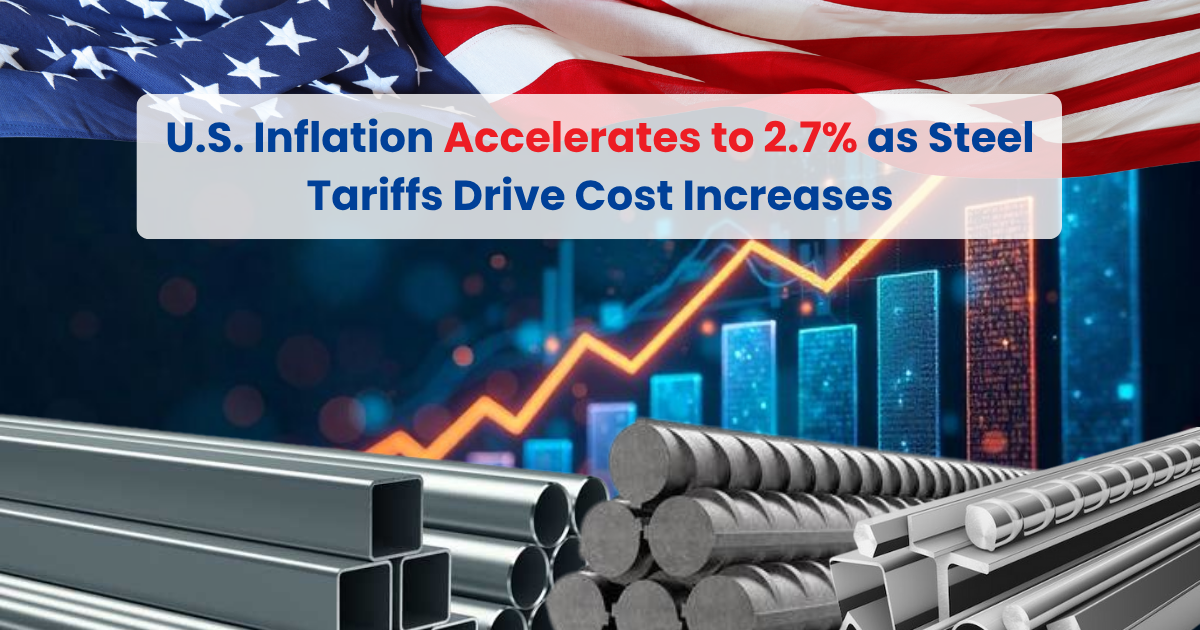India–US Trade Tensions Rise Over Steel and Auto Tariffs NMDC Limited reports a 38% drop in Q4 FY24 consolidated net profit RINL to Raise $23 Million Through Land Sales Amid Crisis

U.S. inflation surged to 2.7% annually in June 2025, marking the highest level since February as tariffs and supply chain pressures continue to impact consumer prices across multiple sectors.
The Consumer Price Index jumped 0.3% monthly, representing the largest increase in five months. Core inflation, excluding food and energy, rose to 3.0% from 2.8%, indicating broad-based price pressures throughout the economy.
Steel tariffs have emerged as a primary inflation driver, with new 25% import duties significantly impacting construction, manufacturing, and automotive sectors. Domestic steel prices have reached $1,400 per ton, up from $900 in 2021, creating ripple effects across steel-dependent industries.
The automotive sector faces particular challenges, with input costs rising 10% overnight following tariff implementation. New vehicle prices increased nearly $1,400 between January and June 2025, while construction projects experience budget overruns of 20-30%.
Metric |
2021 |
2023 |
2025 |
Overall CPI |
5.4% |
3.2% |
2.7% |
Core CPI |
4.6% |
2.8% |
3.0% |
Steel Tariffs |
25% |
10-25% |
25% |
Domestic Steel Price |
$900/ton |
$1,100/ton |
$1,400/ton |
Auto Price Impact |
+1.2% |
+2.9% |
+4.7% |
Goldman Sachs analysts project core inflation could reach 3.0% with current tariffs in place, compared to 2.1% without trade barriers. Morgan Stanley estimates headline inflation at 2.5% for the year, up from earlier projections of 2.3%.
Labor market tightness continues contributing to inflationary pressures, with the job vacancy-to-unemployment ratio at 1.1, above historical averages.
The Federal Reserve faces difficult policy decisions as persistent inflation threatens to anchor expectations above target levels, potentially requiring future rate adjustments to maintain price stability.
Also Read : Trump Says No Plans to Ease Steel, Aluminum Tariffs Vietnam Faces Challenges as U.S. Imposes Additional Taxes on Metal Imports